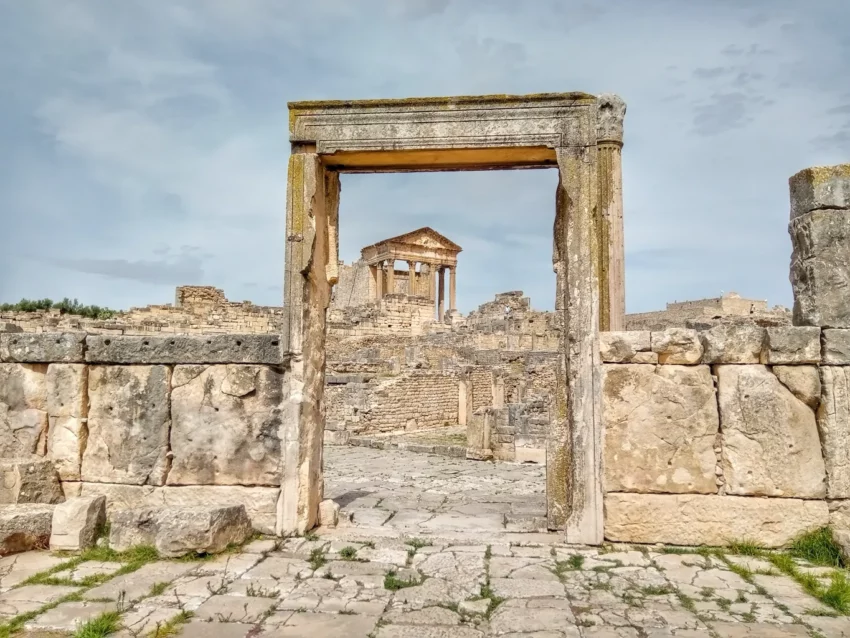Discovering Dougga: A Journey Through Time
Dougga, also known as Thugga or TBGG, stands as a testament to the rich tapestry of civilizations that have flourished in northern Tunisia. Nestled near modern-day Téboursouk, Dougga is a remarkable archaeological site spanning 65 hectares (160 acres). Recognized by UNESCO as a World Heritage Site in 1997, Dougga is celebrated for its well-preserved Roman architecture and its blend of Numidian-Berber, Punic, Roman, and Byzantine influences.
Get your dose of History via Email
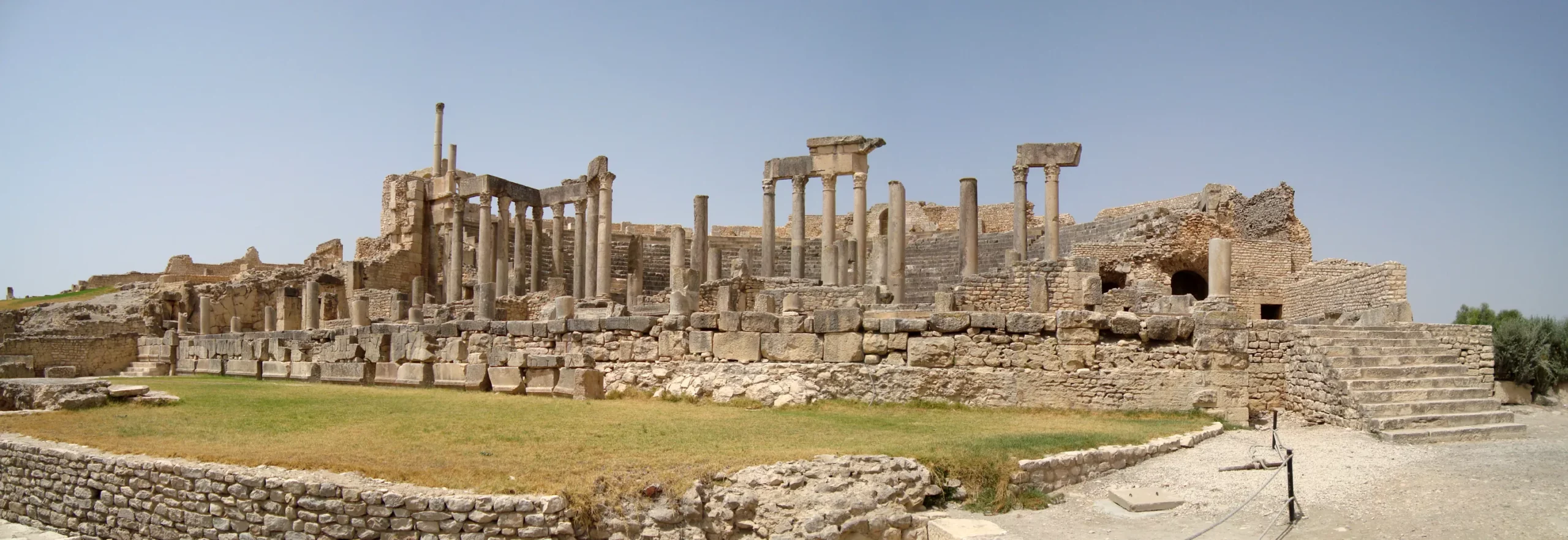
Ancient Names and Origins
The name Dougga has evolved over time. In the Numidian language, it was recorded in the Libyco-Berber alphabet as TBGG. The Punic name was tbgg (𐤕𐤁𐤂𐤂) or tbgʿg (𐤕𐤁𐤂𐤏𐤂). The root “B GG” in Phoenician means “in the roof terrace,” hinting at the settlement’s strategic position atop a defensible plateau. The name later morphed into Thugga in Latin and was eventually adopted into Arabic as Doggā (دڨة or دقة), with Dougga being a French transcription.
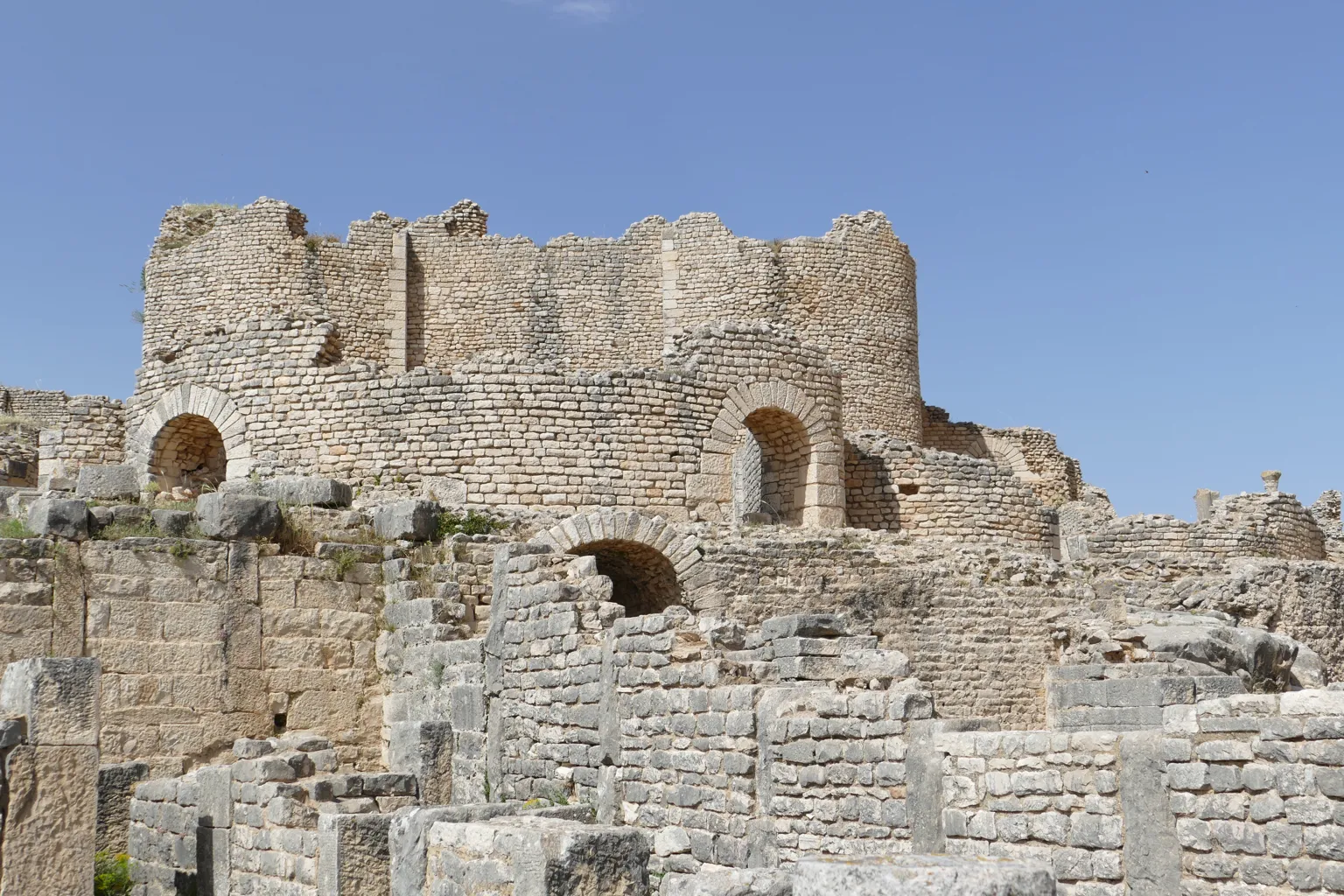
Prime Location
Dougga’s location offers natural protection and breathtaking views of the surrounding plains in the Oued Khalled. Situated 4.6 km (2.9 mi) SSW of Téboursouk, the site’s elevated position has safeguarded it from urban encroachment. The plateau’s slopes and the nearby cliff, Kef Dougga, provided an ideal defensive position, making it a significant settlement throughout various periods.
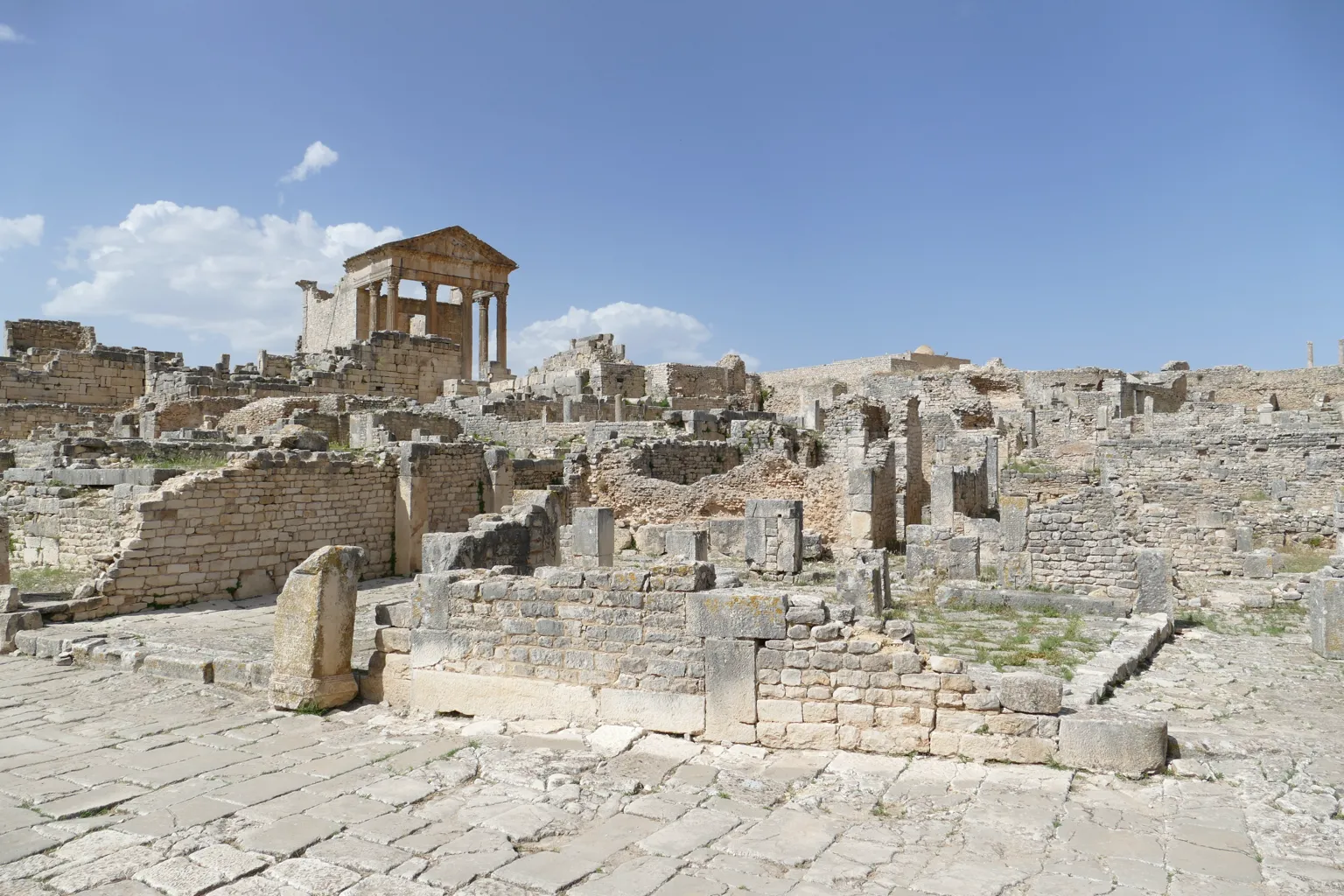
A Rich Historical Timeline
Pre-Roman Era
Dougga’s history predates the Roman conquest, with evidence of occupation as early as the 6th century BC. Historians believe it may be the city of Tocae, captured by Agathocles of Syracuse. The presence of a necropolis, a sanctuary dedicated to Ba’al Hammon, and several temples indicate its early importance.
Roman Influence
Following the Roman conquest, Dougga was granted the status of a civitas, an indigenous city. This status allowed it to retain certain local administrative structures while integrating into the Roman Empire. The city saw a blend of Roman and local institutions, with dual magistracies and a community of Roman colonists. This period marked significant urban and architectural development, as evidenced by the well-preserved Roman theater, the Capitol, and various temples.
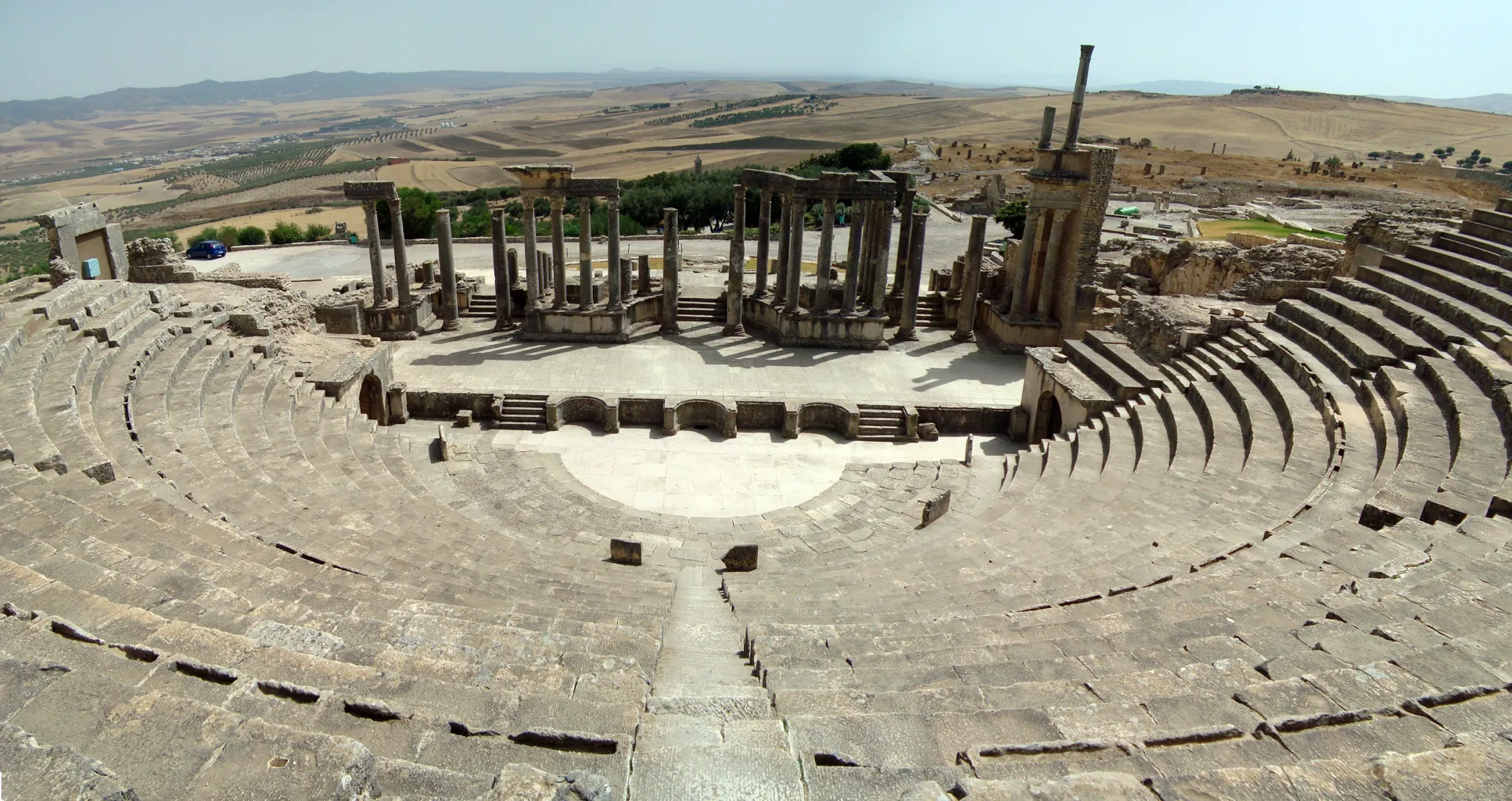
Byzantine and Islamic Periods
During Byzantine rule, Dougga saw transformations such as the conversion of parts of the forum into a fort. The area experienced a decline but was never fully abandoned. The presence of a small mosque and other structures from the Aghlabid period highlights continued habitation.
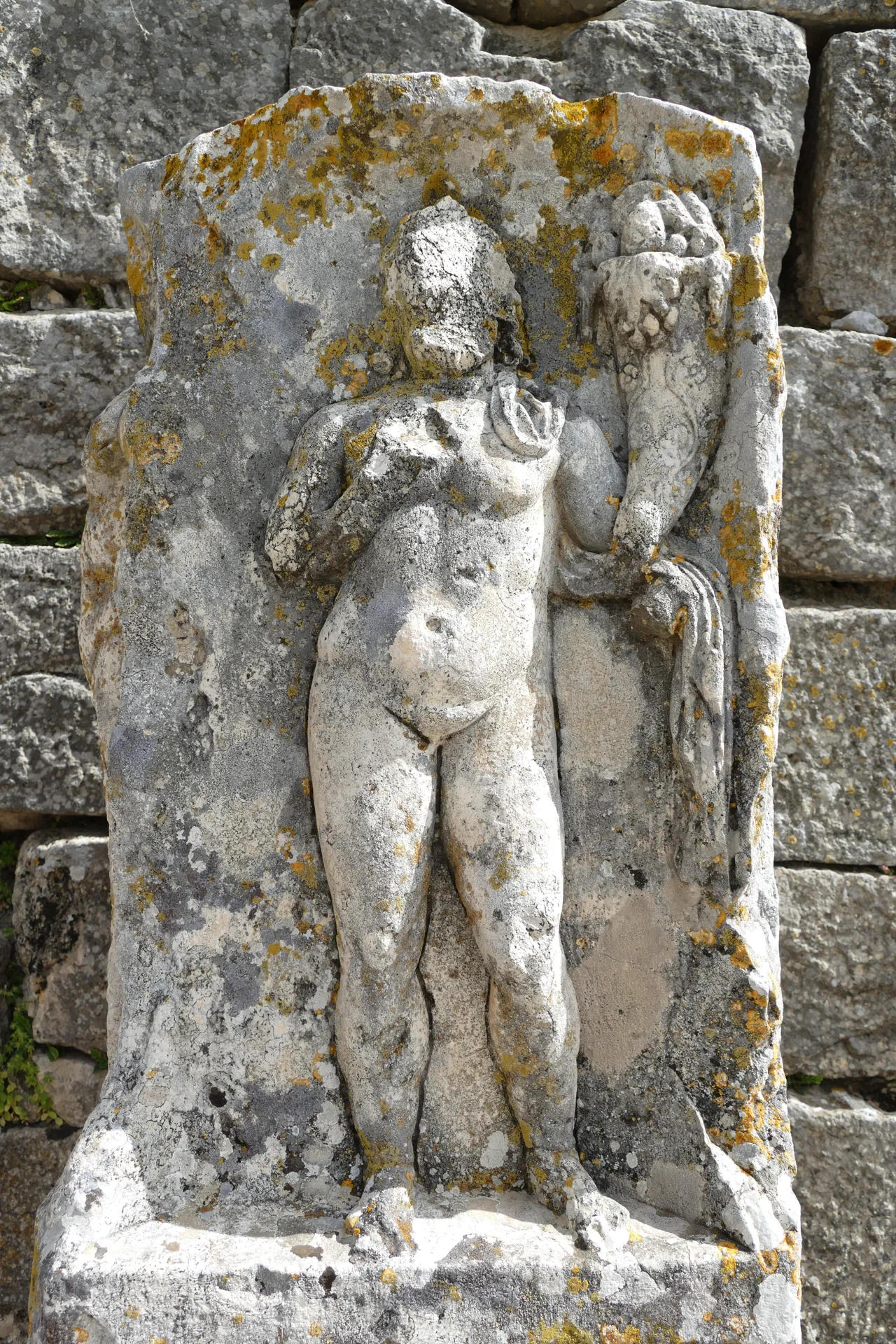
Archaeological Marvels
The Roman Theater
Built in AD 168-169, the Roman theater of Dougga is one of the best-preserved in North Africa. It could seat 3,500 spectators, reflecting the city’s cultural significance. The theater continues to host performances, maintaining its historical role as a center for entertainment.
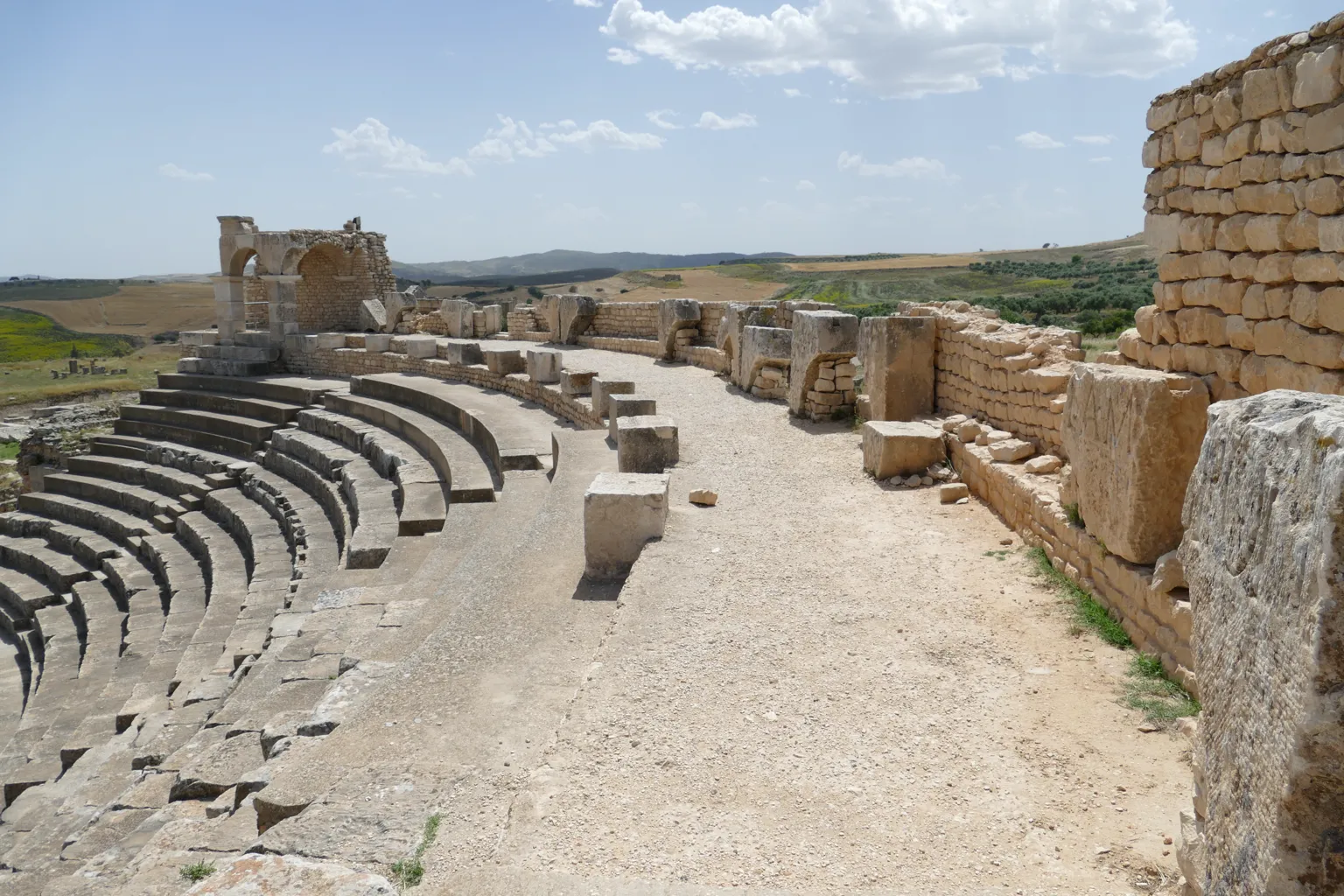
The Capitol
Dedicated to Jupiter, Juno, and Minerva, the Capitol is a striking example of Roman religious architecture. Completed around AD 166-167, it features well-preserved Corinthian columns and a pediment depicting Emperor Antoninus Pius’s elevation to godhood.
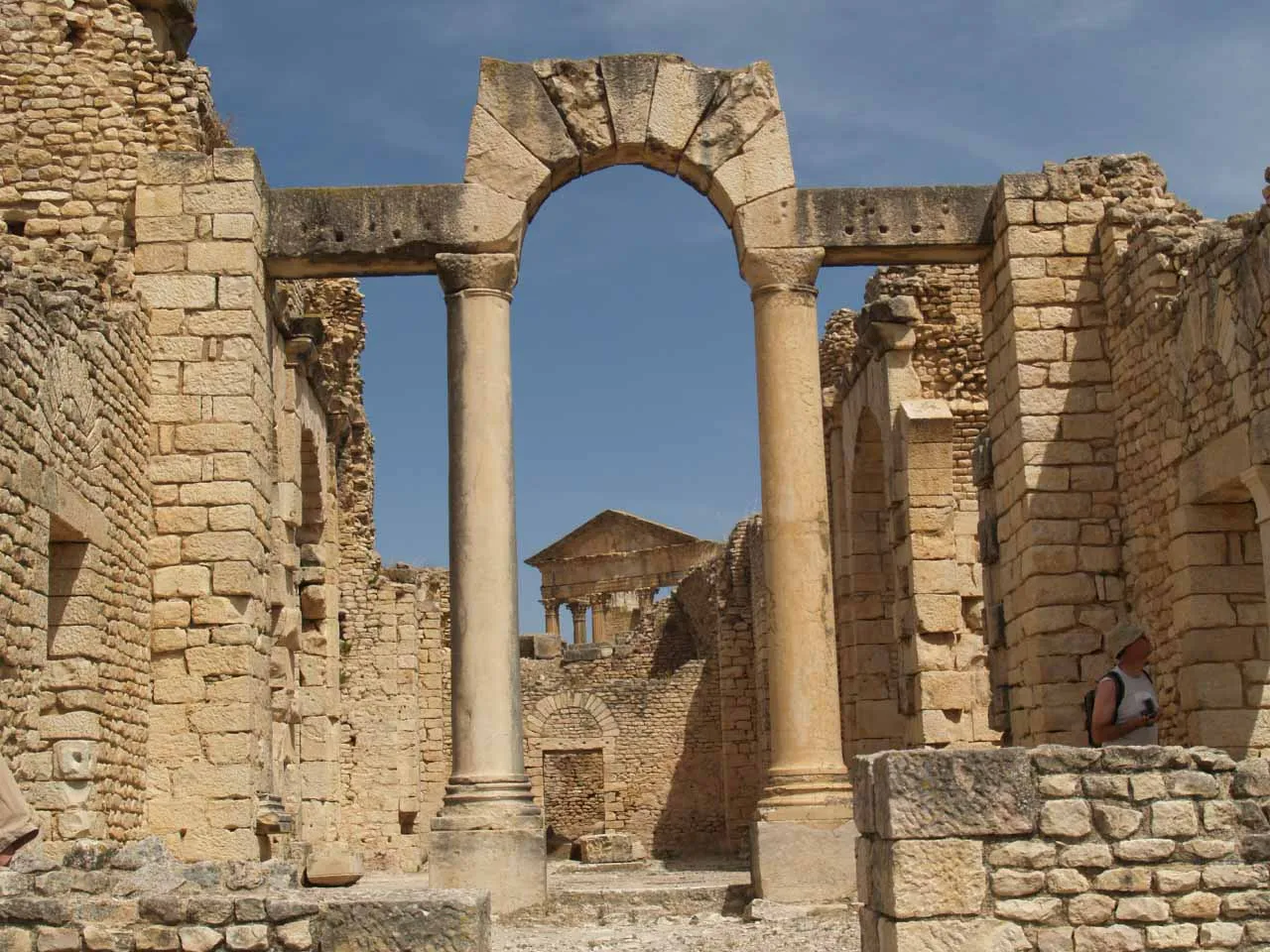
Libyco-Punic Mausoleum
The Mausoleum of Ateban is a rare example of royal Numidian architecture. Built in the 2nd century BC, it stands 21 meters (69 feet) tall. The bilingual inscription on the mausoleum helped decode the Libyan alphabet, marking a significant archaeological find.
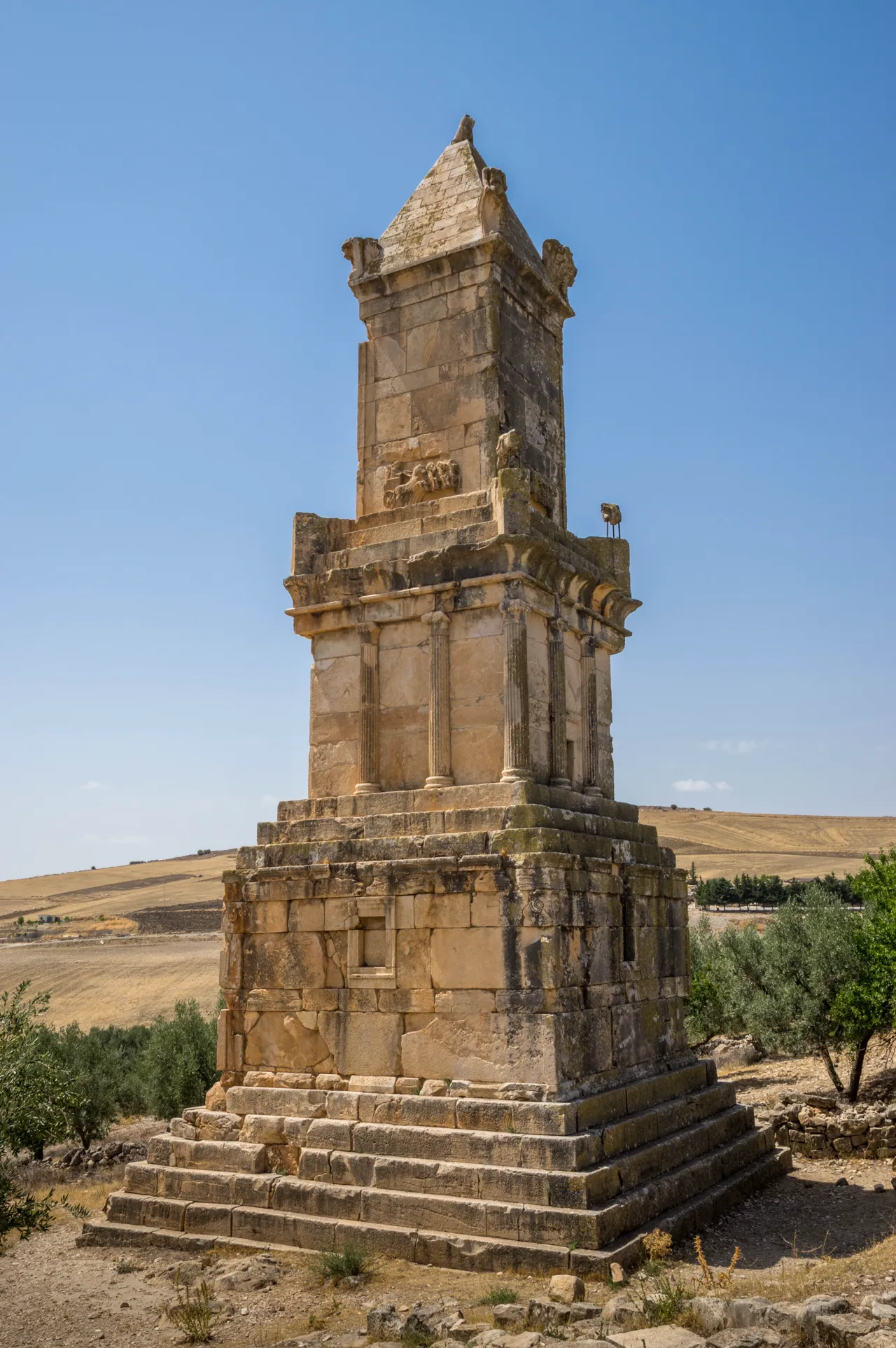
Temples and Sacred Sites
Dougga boasts numerous temples, including those dedicated to Saturn, Juno Caelestis, and Caracalla’s Victory in Germany. The Temple of Juno Caelestis, with its well-preserved temenos and Corinthian columns, exemplifies the blend of Punic and Roman religious practices.
Funerary Monuments
The site features various funerary structures, including dolmens, Numidian bazina tombs, and Roman sepulchres. These monuments provide insights into the burial practices and beliefs of the different cultures that inhabited Dougga.
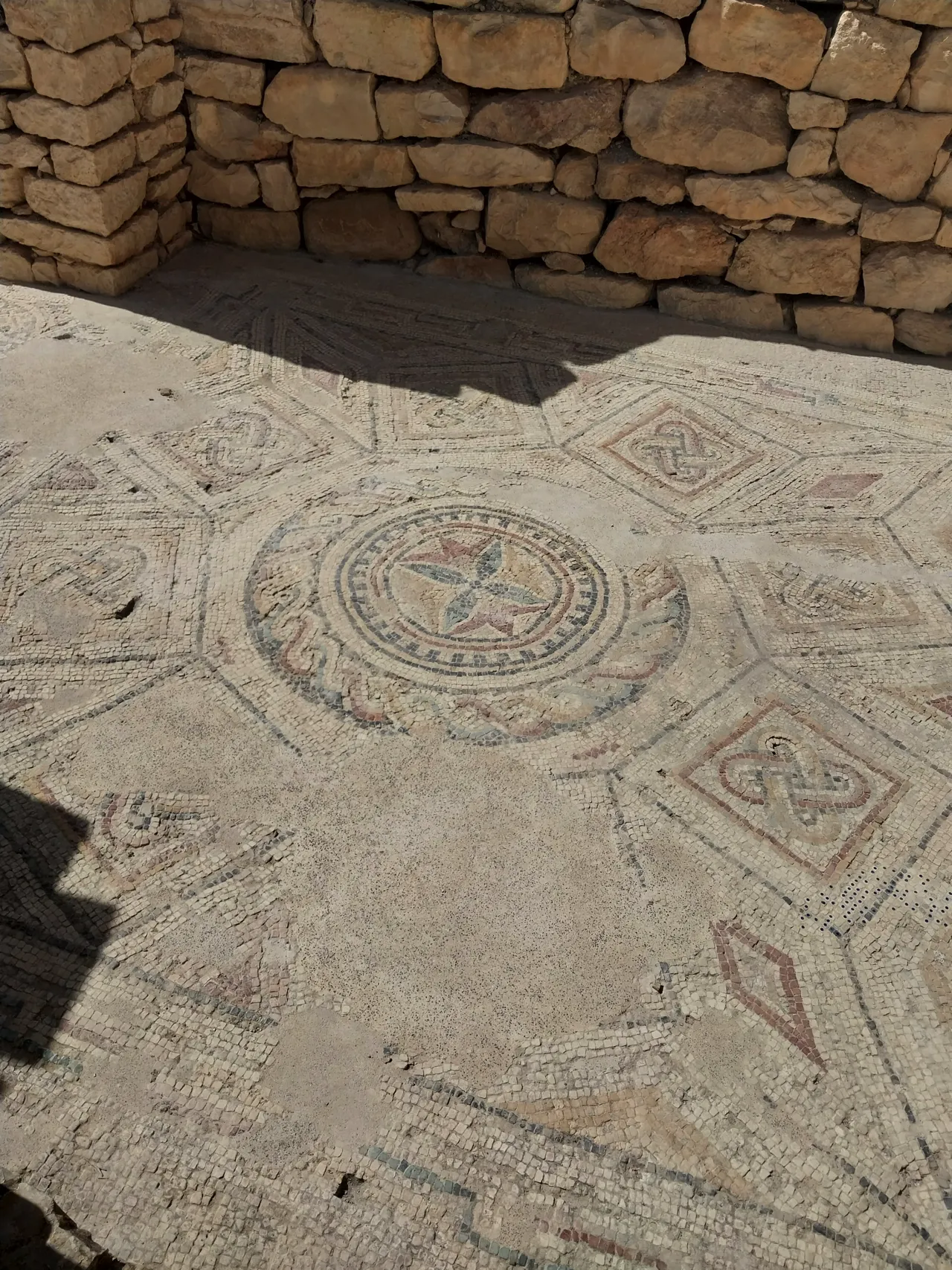
Modern Discoveries and Preservation
The establishment of the French Tunisian protectorate in 1881 marked the beginning of systematic archaeological excavations at Dougga. Significant efforts were made to restore and preserve the site, including the reconstruction of the mausoleum and the Capitol. After Tunisia’s independence, further excavations and the relocation of the last inhabitants to New Dougga facilitated the site’s transformation into a national archaeological park.
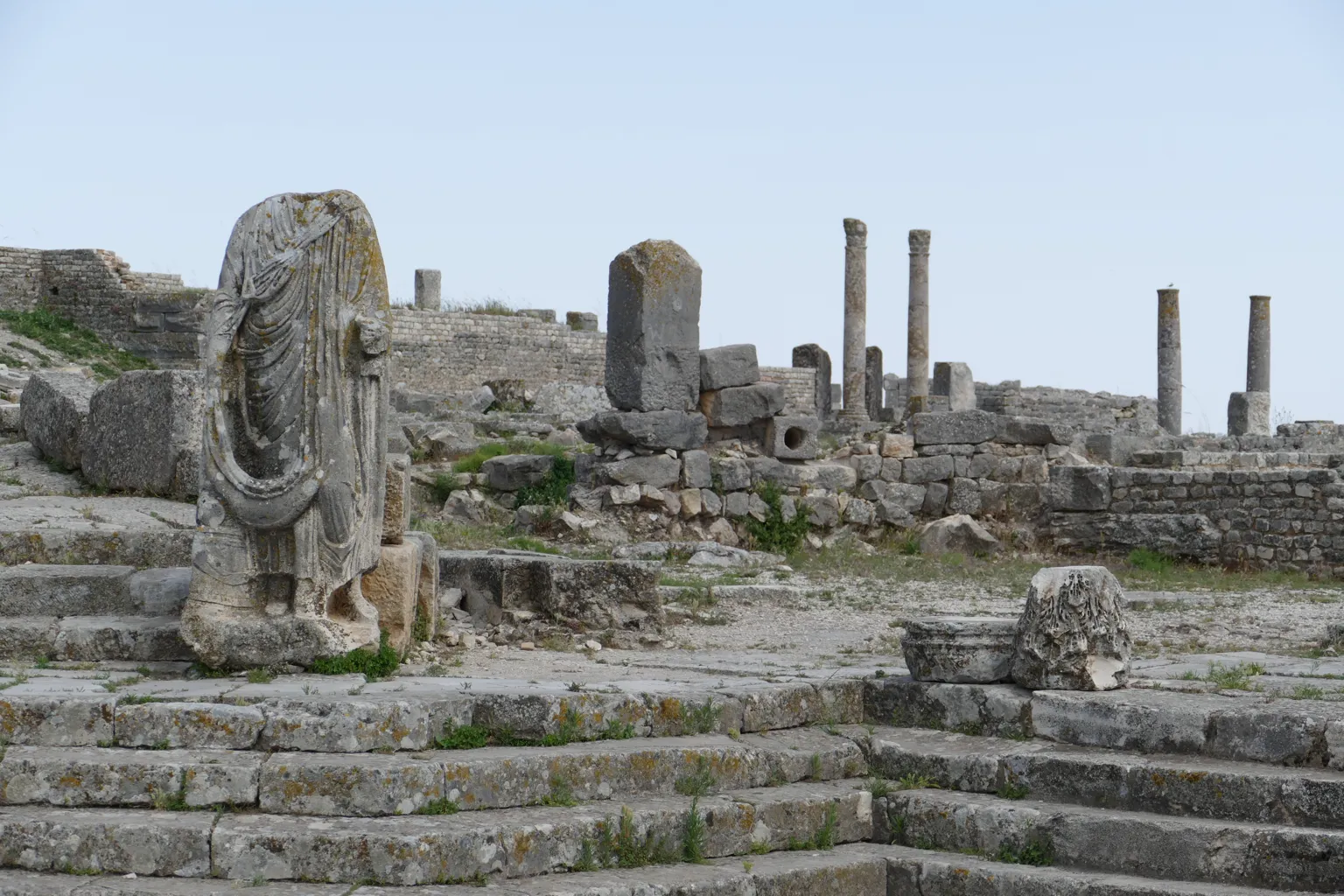
Experiencing Dougga Today
Despite its historical significance, Dougga remains relatively under-visited, with around 50,000 tourists per year. Plans for an on-site museum aim to enhance its appeal and provide a deeper understanding of its rich history. Visitors can explore the ruins, olive groves, and the unique ambiance of this ancient city, making it a must-visit destination for history enthusiasts.
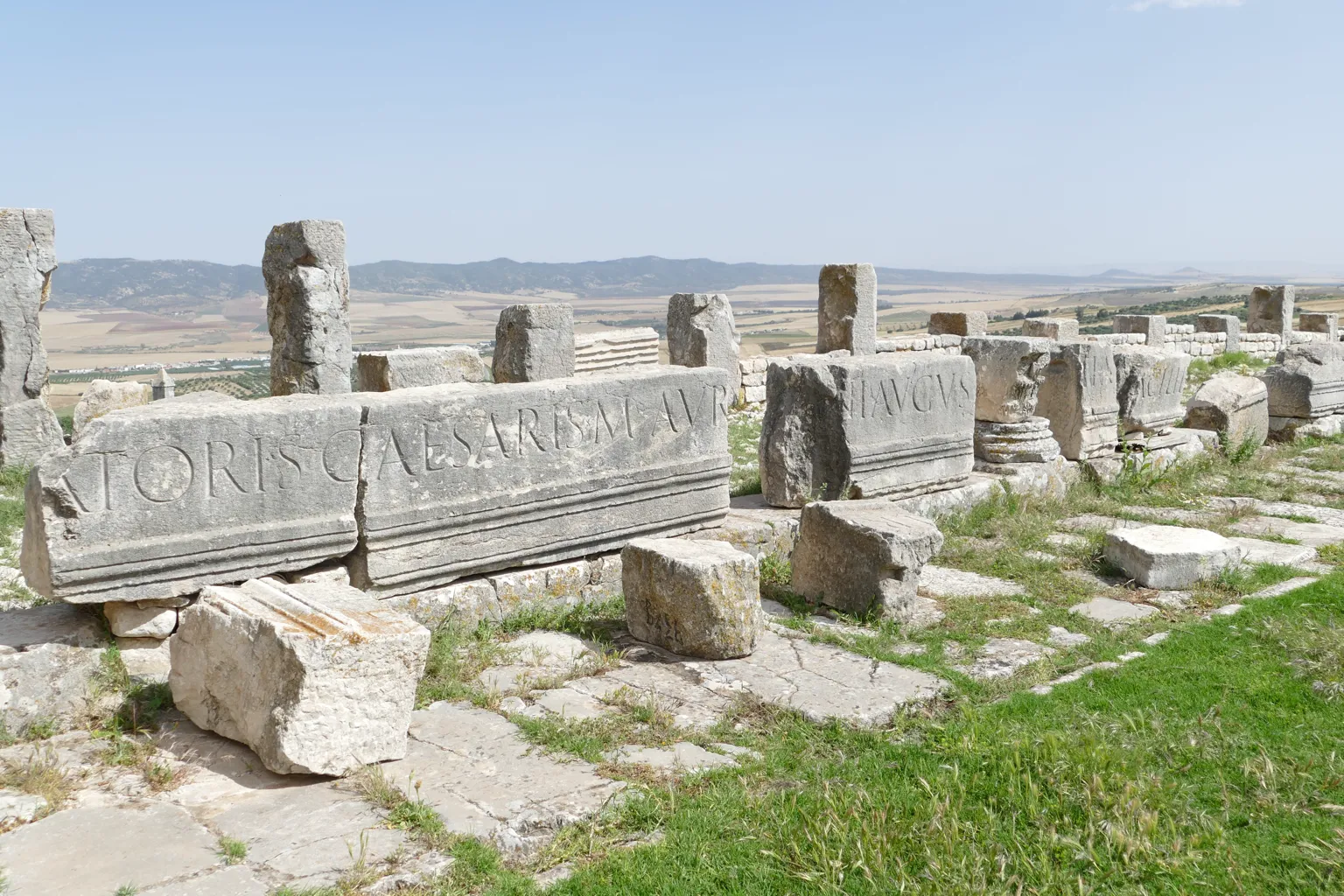
Dougga’s enduring legacy, from its Numidian roots to its Roman grandeur, offers a fascinating glimpse into the past. This ancient city stands as a testament to the rich cultural and historical heritage of Tunisia, inviting visitors to step back in time and explore the stories etched in its stones.
Sources:

